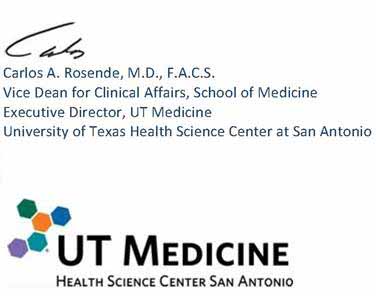|
Dear Dr. Holly,
We appreciate the material that you have forwarded to us regarding SETMA. Our institution is impressed with your remarkable success in creating a sustainable patient-centered medical home recognized internationally for the delivery of compassionate, high quality and cost-effective health care. We are delighted that you will be able to spend some time with us during your upcoming visit to San Antonio to discuss how you were able to achieve this goal.
I would like to offer some background information about UT Medicine and its Primary Care Center. As you know, UTHSCSA is divided into five separate schools, each with its own dean and administrative structure. The School of Medicine has three primary missions: education, research and clinical service. The education mission is primarily supported by state funds, but research is mainly dependent on grants and philanthropy. The clinical mission must be completely self-supporting, with the clinical revenue covering all costs of the of the clinical FTE of the faculty, the clinical infrastructure, well as providing for investments in education and research.
Over the last several years, the clinical practice of the School of Medicine has been transitioning from the traditional department-based “silos” of specialty care into an integrated, multi-specialty clinical group practice under the umbrella of “UT Medicine”. We have nearly 700 physicians and about 200 non-physician providers representing over 100 different clinical specialties and disciplines. Many of our physicians continue to have major roles in teaching students and residents as well as in conducting research. Most of the clinical education is performed at facilities owned and operated by the VA system and the Bexar County health district, University Health System. The clinics of UT Medicine, however, are considered the “private practice” of the School of Medicine with the emphasis on superb clinical care and outstanding customer service. Our practice is headquartered at the Medical Arts and Research Center (MARC), but we have other locations throughout the area. UT Medicine has a senior leadership team composed of an executive director, chief administrative officer and directors of revenue cycle, clinical IT, clinical operations and other key positions. UT Medicine is governed by the Medical Services, Research and Development Plan (MSRDP) Board, comprised of the clinical chairs and center directors of the School of Medicine. Incidentally, the School of Dentistry and the School of Nursing each have totally independent clinical practices with similar governance structures, but on a considerably smaller scale than UT Medicine.
As with most medical schools, our clinical practice developed around specialties concentrating on tertiary and quaternary medical care. To fulfill our vision of becoming a truly integrated health system, it became evident that we needed to develop and expand our primary care base. We chose to combine our fragmented primary care services—Family Medicine, General Internal Medicine, Family Medicine Geriatrics and General Medicine Geriatrics—into a single operational organization, the Primary Care Center (PCC) with its own director. The faculty, however, keep their academic appointments in their respective departments. The PCC will seek PCMH recognition for its current sites and future facilities as it expands to other locations.
All of UT Medicine is being directed to increase access for patients, operate more efficiently, maintain a patient-centered approach, and ensure superior quality of care. It is also asked to focus on a myriad of metrics that are essential to demonstrating value and pursue alternative reimbursement models. Nevertheless, we cannot lose track that most third party payers and employers are still functioning in a fee-for-service world. This presents a special challenge for our PCC providers: In a fee-for-service environment where the emphasis is on a production model and reimbursable activities, how can we create a PCMH model of care that is viable and sustainable? And how do we transition from FFS to alternate reimbursement systems?
We are looking forward to learning your perspective and listening to how you and SETMA have navigated these waters.
Respectfully,

|